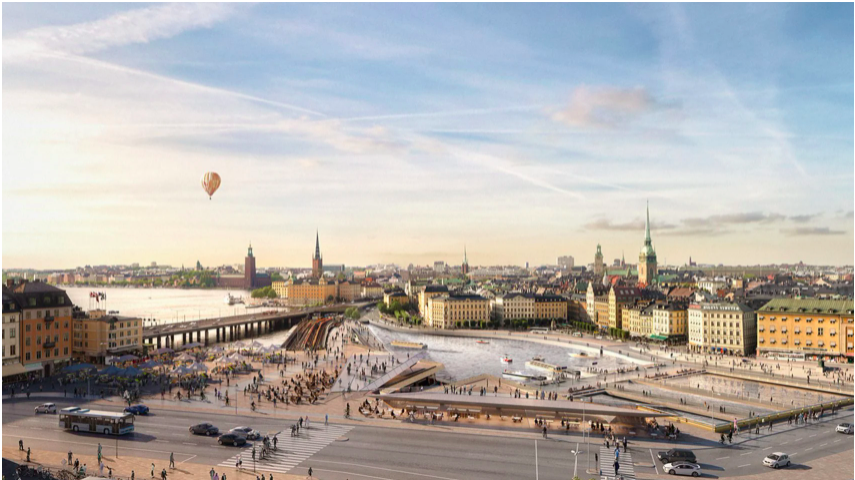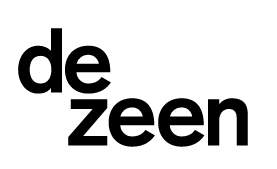
Welcome to iGrow News, Your Source for the World of Indoor Vertical Farming
Swedish Construction Faces "Crisis Situation" As Environmental Court Shuts Down Cement Factory
Construction in Sweden could grind to a halt after the country's biggest cement factory was stripped of its licence to mine limestone on environmental grounds
By Marcus Fairs
July 14, 2021
Construction in Sweden could grind to a halt after the country's biggest cement factory was stripped of its licence to mine limestone on environmental grounds.
The ruling by the Swedish Supreme Land and Environmental Court last week means that the Cementa plant at Slite in Gotland could be forced to end production on 1 November.
Matilda Hoffstedt, manager of the plant, said the ruling would create "a crisis situation for Swedish cement supply" while Cementa said work on Foster + Partners' Slussen masterplan in Stockholm (top image) could be impacted.
However, Greenpeace campaign manager Carl Schlyter welcomed the decision.
"It is wonderful that the court chooses to comply with the environmental laws we have, not to aggravate the species crisis and that incomplete environmental impact assessments are not accepted," Schlyter told Swedish news organisation Dagens PS.
Sweden's second-largest CO2 emitter
The plant produces around three-quarters of all the cement used in Sweden. It is also the second-largest source of greenhouse gas emissions in the country, responsible for three per cent of all CO2 emissions.
The court ruling overturns an earlier decision by a lower court to grant the factory a licence to continue mining limestone, an essential ingredient in cement, for another 20 years.
"They tossed out their application to keep on mining limestone," said Daniel Jacobs, a journalist working at Dagens PS. "Now the construction industry is saying they're not going to be able to build anything in Sweden."
The licence was refused due to concerns over the impact on groundwater in the environmental assessment the factory had submitted. Greenpeace has also accused the plant of using its kilns to incinerate toxic waste without a permit.
Major construction projects at risk
Cementa, which is owned by giant German producer HeidelbergCement, said the decision would jeopardise construction projects in Sweden including major projects including the Slussen and Förbifart infrastructure projects in Stockholm and the Västlänken tunnel in Gothenburg.
“A renewed mining permit in Slite is a prerequisite for a long-term cement supply in Sweden, including for large construction and infrastructure projects such as Slussen, Förbifart Stockholm and Västlänken," the company said.
Cementa is the only cement producer in Sweden. It has a second, smaller factory Skövde in the south of the country.
Cement production is responsible for an estimated eight per cent of global carbon emissions. The emissions are largely due to the way that limestone, which is the main ingredient in cement, is processed.
The rock is crushed and burned to extract calcium, which is the binding agent used in cement, releasing the carbon into the atmosphere in the process.
Several companies are investigating ways of producing emissions-free concrete that does not require traditional cement including Carbicrete, which has developed a way of using industrial slag instead of cement as a binding agent.
The image of the Slussen masterplan is by Foster + Partners.
The Components of Personal Container Farming
Author: Jonathan Tsai
Author: Jonathan Tsai, from Duramax Trusscore
Indoor agriculture has been gaining popularity as compact and versatile opportunities like container farming is making its way into the market. Container farming allows modern farmers to grow without owning a large amount of land. A school can add a new garden on their asphalt yards or a chef can grow fresh ingredients behind the restaurant. Fresh food can be quickly accessed wherever it is needed due to the mobility of container farming. It is even easier to start now that you can purchase from a manufacturer or make it your own DIY project.
The basic requirements in container farming are the container box, lighting system, water pump system, a water-resistant wall liner, and an HVAC unit. The container box is often inexpensive to obtain. Shipping companies prefer to get rid of their damaged containers because they are more expensive to repair than to replace. You can bid for a 20 ft container online and it can go from $1,000 and up. Some important ones to note are the tunnel containers that are open on both ends, open side containers that open from the side, refrigerated containers that keep temperatures low, and insulated containers meant to keep temperatures high.
LED lighting systems allow access to optimal plant growth any time of the day and in areas of the world with less sunlight. In terms of cost, there are a wide variety of LED light options to choose from in every price range. It ultimately depends on the plant you are trying to grow and its needs. One of the factors of the lighting system is the relation to growth and light intensity. It is known that the brighter the lights are, the faster plants grow; however, this also means more heat is radiated.
If the container does not have the right temperature controls, farmers sacrifice plant growth to keep the lighting at appropriate levels. Depending on the location of the container farm, you may need cooling or heating systems. Plants thrive in a warm and humid environment but it is important to have ventilation to keep temperatures from rising too high. There are many ways to ventilate a container including fans, using underground air through a pipe or a mini-split. For a 20 ft container with an area roughly 150 ft, a 9000 BTU mini-split goes for around $600.
An irrigation drip system is a very efficient way to water crops. This system reduces water usage by 90 percent compared to outdoor farming. The cost is inexpensive ranging as low as $30 for a drip system, and $250 for a water pump. The two main factors when picking a water pump should be the Gallons Per Hour (GPH) and PSI water pressure. These metrics will vary as a number of plants, plant size, plant type, and temperature change. It is important to note that the water pressure is associated with the height of the drip system.
Humidity can cause corrosion and rot to walls that are made of wood or metal. Wall Liner that is water resistant, easy to clean and lightweight is important when it comes to building out a container farm. Duramax Trusscore PVC is a great option to use as it is waterproof and seamless. The installation of these panels require no other materials and interlock with each panel. Material that is lightweight allows for cheaper freight expense. In a 20ft container, with a wall surface area of around 440 sq ft, these panels would be roughly $1000 not including the savings in installation and labor.
Overall, there are many manufacturers that offer a turn-key operation complete with equipment and systems. These prices can range from economical to costly as performance increases and additional attributes are applied. Constructing your own container farm can be a fairly simple and inexpensive. Always consider the location, environment, and plant necessities when comparing which components you need to invest more in.




